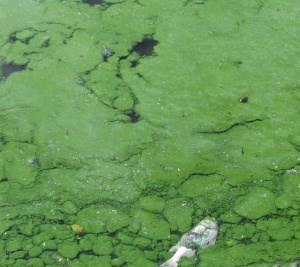The Sudbury and District Health Unit and the Ministry of the Environment and Climate Change are currently investigating possible blue-green algal blooms at several beaches along Ramsey Lake.
The Ministry of the Environment and Climate Change is testing water samples at the Main, Amphitheatre, New, Canoe Club and Bell Grove beaches to confirm the presence of blue-green algae.
As a precaution, the health unit has posted signs advising the public to avoid swimming, drinking the water and allowing pets into the water if the algal bloom is present at the beaches. If no bloom is present, water can be used for regular recreational activities.
The City of Greater Sudbury is working closely with the Sudbury & District Health Unit and the Ministry of the Environment and Climate Change to monitor the situation.
“Though the bloom is presently not located near the David Street Water Treatment Plant intake, the health unit has been informed by the Ministry of the Environment and Climate Change that the plant has an effective barrier to all algae and can reduce the levels of algae toxins found in raw water,” said Burgess Hawkins, a manager in the health unit’s environmental health division, in a press release. “This means that the municipal drinking water supply is protected.”
Blue-green algal blooms could also appear in other parts of affected lakes. Because blooms are not anchored, they can move from one location to another through wind and water action. New blooms can also form. All residents on lakes or rivers should look for blooms in their area.
Blue-green algal blooms have an unsightly pea soup appearance and a foul smell, and can produce toxins.
The highest concentrations of toxins are usually found in blooms and scum on the shoreline. These dense accumulations pose the greatest potential risks to people and pets. The algae toxins can irritate a person’s skin and, if ingested, cause diarrhea and vomiting. If a person ingests high levels of toxin, they could suffer liver and nervous system damage.
For more information, please call the Sudbury & District Health Unit at 705-522-9200, ext. 464 or visit SDHU.com.
